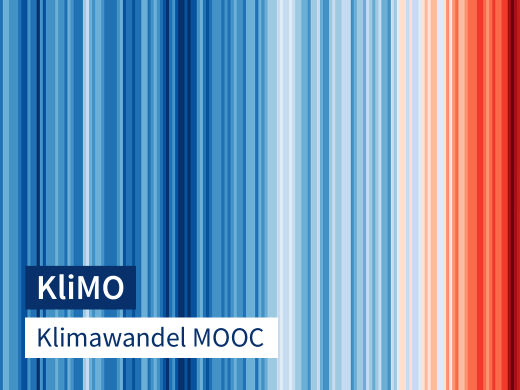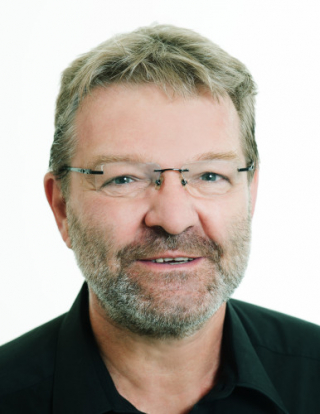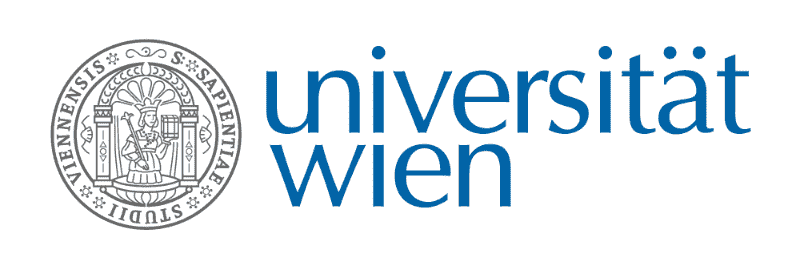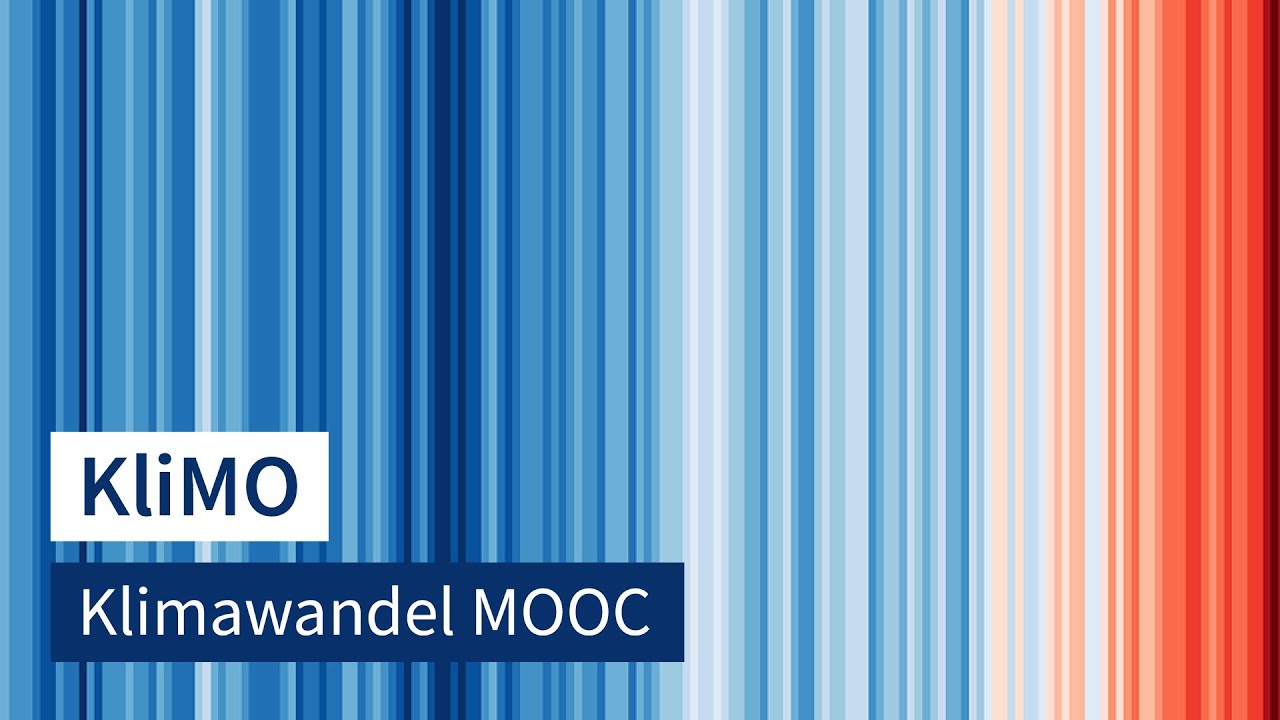


Klimawandel MOOC (KliMO): Wissenschaftliche Grundlagen
University of Vienna
Prof. Dr. Thomas Glade
Tietoa
Traileri Klimawandel MOOC (KliMO): Wissenschaftliche Grundlagen
Yleistä tietoa kurssista
Der Klimawandel ist ein globales Phänomen, welches in den
letzten Jahren von einem Nischendasein verstärkt ins Bewusstsein der breiten
Öffentlichkeit getreten ist. Ausgehend von einem eher wissenschaftlichen
Austausch, hat dieser vielschichtige Themenbereich in Gesellschaft, Politik und
Wirtschaft zu einer umfassenden Debatte über zukünftige nationale und
internationale Strategien geführt.
Aber auch bottom-up Initiativen wie Fridays for Future führen zu einer Omnipräsenz dieser Thematik im gesellschaftlichen und politischen Diskurs. Um diesen Diskurs in all seinen Facetten besser zu verstehen und aktiv mitgestalten zu können, ist es von großem Vorteil sich den wissenschaftlichen Grundlagen des Klimawandels bewusst zu sein und sich damit auseinander zu setzen. Dies ist das zentrale Ziel des Klimawandel MOOC, KliMO.
Da der Themenkomplex Klimawandel sehr viele Bereiche
umfasst, ist eine ganzheitliche Betrachtung aus inter-, intra-, trans-
und multidisziplinären Perspektiven erforderlich. Dieser Kurs beinhaltet
Beiträge von ausgewählten Universitätsprofessor*innen, nationalen und
internationalen Expert*innen unterschiedlicher Fachgebiete, unter
anderem der Geographie, der Geophysik, des Risikomanagement, der
Klimaforschung sowie Institutionen
wie der Zentralanstalt für Meteorologie und Geodynamik (ZAMG),
dem Bundesministerium für Inneres (BMI), Abteilung Wildbach und
Lawinenverbauung und Schutzwaldpolititk (WLV), dem Bundesministerium für
Landwirtschaft, Regionen und Tourismus (BMLRT) und Greenpeace.
Sisältö
Kurssin sisältö
In insgesamt 4 Einheiten und 12 Lektionen werden im KliMO dieser umfassende Themenkomplex aus einem ganzheitlichen geographischen Zugang mit den verschiedenen natur- und sozialwissenschaftlichen Perspektiven beleuchtet. Dabei lernen Sie mit Begriffen wie Klima, Emissionsbilanzierung und sozial-ökologischer Transformation umzugehen. Unter anderem werden folgende zentrale Fragen adressiert:
- Was sind die bio-physikalischen Zusammenhänge im Klimasystem?
- Wie funktioniert ein Klimasystem über Jahrmillionen, und wie unterscheidet sich der aktuellen Klimawandel davon?
- Welche Auswirkungen hat der Klimawandel auf Umwelt und Gesellschaft?
- Wie sind urbane Räume und Gesellschaften vom Klimawandel betroffen?
- Wie sieht Klimaschutz in der Praxis aus?
Der KliMO lädt Sie ein, sich aktiv mit diesen Fragen auseinander zu setzen. Es erwarten Sie spannende Videos und praxisnahe Arbeitsaufträge, die mit Eigenrecherche sowie Datenverarbeitung verbunden sind. Darüber hinaus bietet Ihnen das Forum die Möglichkeit sich mit anderen Lernenden auszutauschen, Gelerntes zu vertiefen und eigene Gedanken zu formulieren und diskutieren.
Kurssin tavoitteet
Die zentralen Lernziele des KliMO sind unter anderem:
- Vermittlung von Grundkenntnissen und -kompetenzen sowie Analysefertigkeiten von Ursachen und Folgen des Klimawandels
- Vermittlung wissenschaftlicher Herangehensweisen an Problemstellungen aus verschiedenen Perspektiven und Entwicklung methodischer Kompetenzen
- Kritische Einordnung von Ursachen und Folgen des Klimawandels sowie von Klimaschutzmaßnahmen, Klimaanpassungsstrategien und deren Auswirkungen
Pohjatiedot
Für die Teilnahme sind keine Vorkenntnisse erforderlich. Englischkenntnisse sind für einige der Literaturhinweise von Vorteil.
Kurssin toteuttaminen
Der KliMO setzt sich aus 12 Lektionen zusammen, die in vier Einheiten strukturiert sind. Jede Lektion beschäftigt sich vertiefend mit dem jeweiligen Themenkomplex. Es erwarten Sie unter anderem spannende und abwechslungsreiche Vorträge, Interviews mit ausgewählten Expert*innen, sowie Einblicke in Forschungsprojekte vor Ort. Damit erhalten Sie umfassende Einblicke in die inter-, intra-, trans- und multidisziplinären Perspektiven auf den Klimawandel.
- Einheit 1: Komponenten und Prozesse
des globalen Klimasystems
- Lektion 1: Grundbegriffe
- Lektion 2: Prozesse im Klimasystem
- Lektion 3: Modellierung des Klimasystems
- Einheit 2: Natürlicher und
anthropogener Klimawandel in Raum und Zeit
- Lektion 4: Natürliche Treiber des Klimawandels
- Lektion 5: Anthropogener Beitrag zum Klimawandel
- Lektion 6: Extremereignisse
- Einheit 3: Auswirkungen auf Umwelt
und Gesellschaft
- Lektion 7: Umweltauswirkungen
- Lektion 8: Klimawandel und ländliche Räume
- Lektion 9: Klimawandel und Migration
- Lektion 10: Klimawandel und Stadt
- Lektion 11: Regionale Auswirkungen
- Einheit 4: Sozio-politische
Mechanismen und Institutionen
- Lektion 12: Sozial-ökologische und digitale Transformation
Todistus
Nach einer erfolgreichen Teilnahme an einer Lektion erhalten die Teilnehmenden eine Bestätigung, das sogenannte „Badge“. Eine Lektion gilt als erfolgreich abgeschlossen, wenn im abschließenden Quiz der Lektion mindestens 75% der Fragen richtig beantwortet wurden.
Lisenssi
Tämän työn lisensoija on CC BY-SA 4.0
Einbettung in Lehrveranstaltungen der Universität Wien
Teile des KliMO werden als Teil des Erweiterungscurriculums (EC) „Klimawandel: Wissenschaftliche Grundlagen“ der Universität Wien eingesetzt. Diese werden nicht direkt beurteilt, sondern fließen inhaltlich in die Lehre ein. Die Leistungsbeurteilung des EC’s basiert auf den angebotenen Lehrveranstaltungen. Für eine Prüfungsanmeldung im Erweiterungscurriculum ist es deshalb sehr empfohlen alle Lektionen zu bearbeiten. Der erfolgreiche Abschluss der jeweiligen Lektionen wird mit den Badges bestätigt.
Kurssin ohjaaja

Prof. Dr. Thomas Glade
Prof. Dr. Thomas Glade studierte an der Karls-Ruprechts Universität in Heidelberg Geographie mit den Nebenfächern Geologie und Rechtswissenschaften von 1988 bis 1994. Nach seiner Dissertation von 1994-1997 an der University of Wellington, Neuseeland habilitierte er 2004 an der der Rheinischen Friedrich-Wilhelms Universität in Bonn, Deutschland. Seit 2006 ist er an der Universität Wien Professor für Physische Geographie mit dem Schwerpunkt Geomorphologische Systeme und Risikoforschung. Er war Vorstand des Instituts für Geographie und Regionalforschung (2010-2015) und Vizedekan für Lehre an der Fakultät für Geowissenschaften, Geographie und Astronomie (2017-2019). Darüber hinaus leitete er den Arbeitskreis für Naturgefahren und -risiken der Deutschen Gesellschaft für Geographie von 2001-2010, ist seit 2011 im geographieverband.at involviert (2017-2020 Vorstand) und war im CERG European Centre of Geomorphological Hazards, seit 2003 im Steering Committee und von 2014 – 2019 als Präsident tätig. Weiterhin ist ihm die berufsbegleitende Weiterbildung ein großes Anliegen – er leitet seit 2013 den MSc. Weiterbildungsstudiengang OeRISK – Risikoprävention und Katastrophenmanagement, der an der Universität Wien am Postgraduate Center etabliert ist.
Kirjaudu sisään ja ilmoittaudu Tällä hetkellä: 1004 Osallistujat
Maksuton kaikille € 0.00
Yhteistyökumppanit
Für die aktive Gestaltung und der Umsetzungen der jeweiligen Lektionen des Klimawandel MOOC KliMO waren folgende Personen der Fakultät für Geowissenschaften, Geographie und Astronomie als Lehrende involviert:
Dr. Blaž GASPARINI (Wissenschaftlicher Mitarbeiter, Arbeitsgruppe Climate Science, Institut für Meteorologie und Geophysik)
Prof. Dr. Thomas GLADE (Kursleiter, Professor für Physische Geographie, Institut für Geographie und Regionalforschung)
Prof. Dr. Stephan GLATZEL (Professor für Geoökologie, Institut für Geographie und Regionalforschung)
Prof. Dr. Kerstin KRELLENBERG (Professorin für Urban Studies, Institut für Geographie und Regionalforschung)
Dr. Philipp MARR (Kurskoordinator, Senior Scientist Arbeitsgruppe Physische Geographie, Institut für Geographie und Regionalforschung)
Dipl.-Ing. Andreas MAIER (Wissenschaftlicher Mitarbeiter, Arbeitsgruppe Geoökologie, Institut für Geographie und Regionalforschung)
Dr. Harald STERLY (Senior Scientist Arbeitsgruppe Bevölkerungsgeographie, Institut für Geographie und Regionalforschung)
Prof. Dr. Aiko VOIGT (Professor für Climate Science, Institut für Meteorologie und Geophysik)
Die Lehrenden möchten sich herzlich bei den folgenden Mitwirkenden bedanken, ohne die der Klimawandel MOOC nicht so hätte erstellt werden können.
Vielen Dank für die Mitwirkung an:
- Jan BURCK (Germanwatch, D)
- Ing. Mag. (FH) Peter FRANK (Landwirtschaftskammer Tirol, A)
- Mag. Stefan HASELBERGER (Universität Wien, A)
- Dr. Klaus HASLINGER (Zentralanstalt für Meteorologie und Geodynamik (ZAMG), Wien, A)
- Dr. Johann HIEBL (Zentralanstalt für Meteorologie und Geodynamik (ZAMG), Wien, A)
- Dr. Sabine KRAUSHAAR (Universität Wien, A)
- Dipl.-Met. Matthias LANGER (Zentralanstalt für Meteorologie und Geodynamik (ZAMG), Wien, A)
- Dipl.-Ing. Andreas MAIER (Universität Wien, A)
- Ing. Harald MAYNOLLO (Bezirksforstinspektion Landeck, A)
- Prof. Dr. Dirk NOTZ (Universität Hamburg, D)
- Adam PAVLOV (Greenpeace, A)
- PD Dr. Florian RUDOLF-MIKLAU (Leiter Abteilung Wildbach- und Lawinenverbauung und Schutzwaldpolitik (WLV), Bundesministeriums für Landwirtschaft, Region und Tourismus (BMLRT) , Wien, A)
- Prof. Dr. Patrick SAKDAPOLRAK (Universität Wien, A)
- Dr. Michael STAUDINGER (ehem. Direktor Zentralanstalt für Meteorologie und Geodynamik (ZAMG, Wien, A)
- Dr. Robert STOCKER (Leiter Abteilung Staatliches Krisen- und Katastrophenmanagement und Koordination Zivile Sicherheit (SKKM), Bundesministerium für Inneres (BM.I), Wien, A)
- MSc. Margherita STUMVOLL (Universität Wien, A)
- Mag. Ulrike TOTSCHNIG (KLAR! Kaunergrat, A)
- Dr. Rosmarie de WIT (Zentralanstalt für Meteorologie und Geodynamik (ZAMG), Wien, A)
Und final möchten wir
uns auch beim gesamten Team des CTL bedanken, die uns bei der Erstellung des
MOOC so tatkräftig und ausdauernd unterstützten.

University of Vienna
Wien
